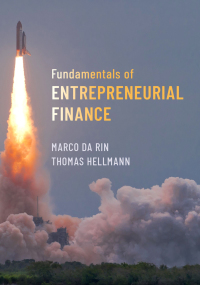Question
As the financial advisor for Georgetown Development Co. (GDC), you are responsible for analyzing the newly proposed Woodland Street Office Project. Your boss has given
As the financial advisor for Georgetown Development Co. (GDC), you are responsible for analyzing the newly proposed Woodland Street Office Project. Your boss has given you the construction and marketing studies for the project. The plan calls for a construction phase of one year and an operational phase of five years, after which the property will be sold. Your boss has informed you that the required return on the project is 15% (after tax). Part 1: Construction Phase The marketing staff has found a 2.2 acre site that can be acquired for $412,500. They have concluded that the 2.2 acre site will provide enough space for the proposed building, as the site will support an office building with a gross building area (GBA) of 62,000 square feet. The gross leasable area (GLA) will be 55,800 square feet, giving it a leasable ratio of 90%. The construction division of GDC had told you that they can keep construction hard costs to $48/square foot (GLA). On soft costs, you are told that a portion of it will be $5/square foot (GLA), which is expected to cover all typical soft cost items EXCEPT (construction loan) interest carry and all loan fees. To get the all-inclusive soft cost number that is similar to what you see in Rolling Meadows, these missing soft cost items (i.e., construction loan interest carry and all loan fees) need to be estimated by you in this homework given their straightforward definitions. The construction division has also informed you that they will have to spend $100,000 for site improvements before construction of the office building begins. Goliath National Bank has agreed to provide the construction loan for the project. The bank will authorize you to draw funds enough to cover cost on site improvements, all the hard cost plus eligible soft cost as defined above, i.e., 5$/sf. The construction loan interest
carry will be at an annual rate of 11.5%, plus a loan origination fee of 2 points. The construction division estimates that 40% of the total draw will be taken down evenly during the first four months, with the remaining 60% of total draw being taken down during the final eight months of the construction phase. Permanent financing for the project will come at the end of the first year at the amount equal to the ending balance of the construction loan. GDC plans to obtain permanent financing from Trust Insurance Co. at an interest rate of 11% with a 3% prepaid loan fee. The loan has a 10 year term and is to be paid back monthly over a 25-year amortization schedule. a) Calculate the construction draw schedule. What will the yield to the lender of the construction loan be? (20 points) b) Calculate the total sum of the following items1: total draw plus two loan fees and construction loan interest carry). (20 points) c) Create a statement of cash flows for the construction phase. Use this to determine how much equity is needed to fund the project. The statement of cash flows should include outflows relate to purchase and improvement of the site, as well as loan fees and interest. Inflows should include the construction loan. (20 points) Part 2: Operational Phase The marketing staff has assured you that office space can be rented out for $21.50/square foot. In the first year of operation, tenant reimbursements for the project are expected to be $4.50 per square foot (GLA) and the building is expected to be 70% leased (70% of leasable area will be leased). After that, vacancies should be 10% of leasable area. Operating expense in the first year will be $12/square foot. Operating expense, rent, and tenant reimbursement and expected to increase by 4% each year. The sales price of the property after the operational phase is expected to be $4,200,000. The project will incur a sales expense of 3% on the sale of the property. Your boss has informed you that the relevant marginal and capital gains tax rate for the project is 35%. For depreciation purposes, assume 90% of depreciable costs are from capital improvements and 10% of depreciable costs are from tenant improvements. Capital improvements shall be depreciated over 31.5 years using straight line method, and tenant improvements shall be depreciated over 7 years by Double Declined Balance method (DDB). (We used DDB method in Rolling Meadow center case in class. Also see accounting prep video offered in Module 1 for more details). d) Calculate the cash flows from operations and sale of the property. (20 points)
e) Combine the cash flows from c) and d) to determine the before-tax IRR, and after tax IRR and NPV. Should GDC do the Woodland Street Office Project with the after-tax numbers?
Step by Step Solution
There are 3 Steps involved in it
Step: 1

Get Instant Access to Expert-Tailored Solutions
See step-by-step solutions with expert insights and AI powered tools for academic success
Step: 2

Step: 3

Ace Your Homework with AI
Get the answers you need in no time with our AI-driven, step-by-step assistance
Get Started


